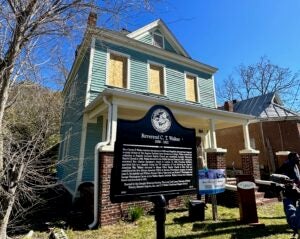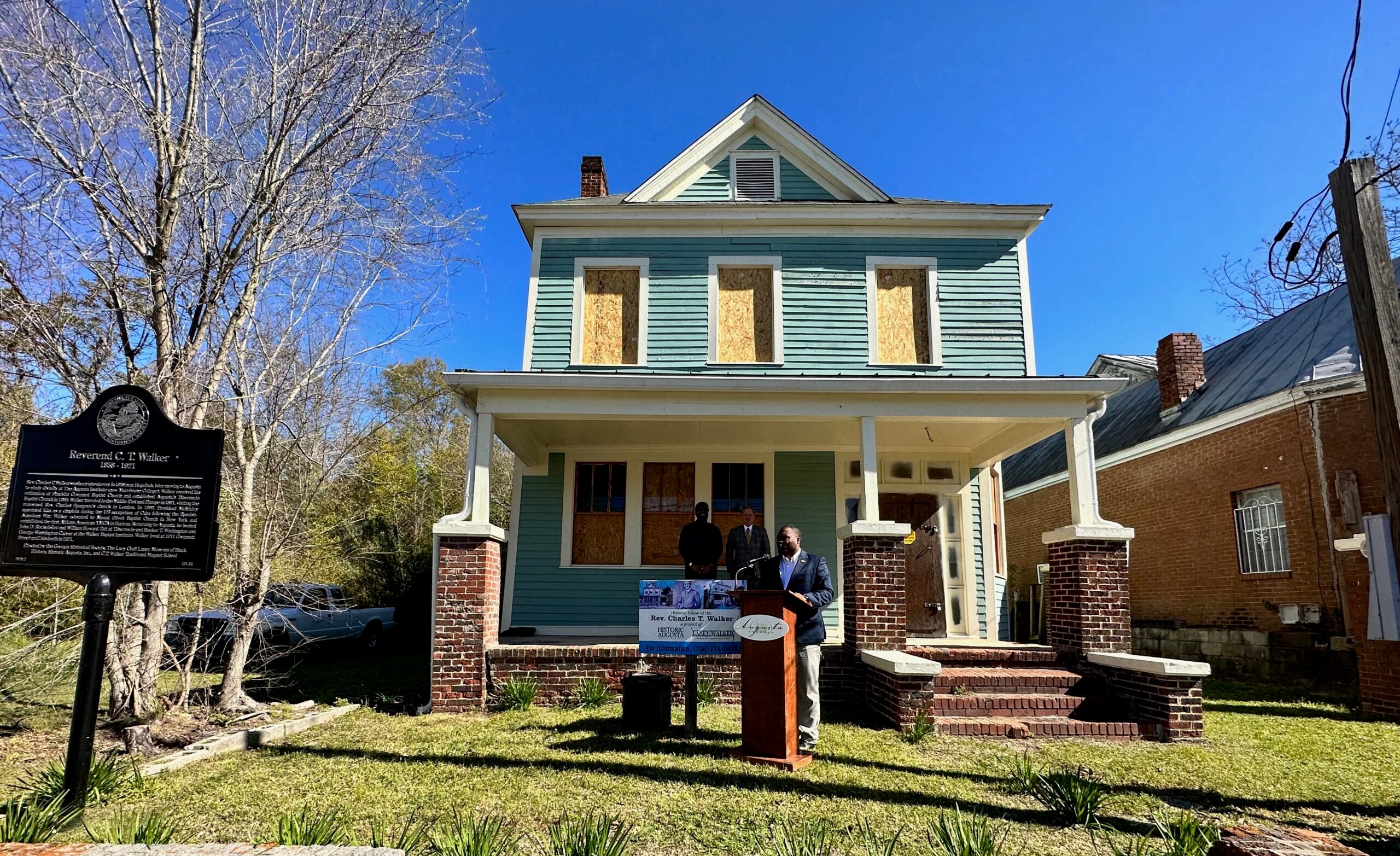The acquisition of the historic C.T. Walker home on Laney-Walker Boulevard marks a turning point in Augusta’s 15-year revitalization of the area, those spearheading the effort said.
“Community economic development is the philosophy that started back in 2008. The commitment was not to build a neighborhood, but to transform it back into a thriving community,” Director Hawthorne Welcher of Augusta Housing and Economic Development said Wednesday.
“From a housing perspective, we’ve done that. We’ll continue to do that,” Welcher said. “So now, we pivot to the boulevard, we pivot to the main street, that heartbeat known as Laney-Walker Boulevard.”
Since the redevelopment project launched with 50-year commitment of hotel-motel taxes, the city has financed construction of some 60 houses and an apartment complex in the historic African-American Laney-Walker Boulevard and Bethlehem communities.
The intended use of the Walker home has not been determined, but it will further the goal of creating a “midtown” commercial area along the neighborhood’s main road while preserving and protecting the historic asset, he said.
“We will always preserve the legacy of this historic artifact,” he said. “We’re going to work like heck to be sure we create the highest and best use of the economic instrument, (one) that will be happy and gleeful and accepted by all who visit the boulevard.”
The city bought the house from Historic Augusta for an unspecified amount, subject to a preservation easement to ensure guidelines for historic structures are followed.
The preservation organization played a major role in preserving the property, which had been in an extreme state of disrepair.
George Bush, president of the group’s board of directors, said the house was placed on its endangered properties list in 2009.
The last owner’s will was never probated, but Historic Augusta was able to obtain quitclaim deeds from 19 legal heirs to acquire it, Bush said.
Working with Historic Augusta’s revolving fund, several grants and other donations they have since repaired siding and painted the exterior, rebuilt the front porch, stabilized the foundation and added a new roof, he said.

The house was the longtime home of the Rev. C.T. Walker. Born in Hephzibah into slavery in 1858, Walker rose to become an extremely popular evangelist of the late 19th and early 20th centuries.
Walker attended the Augusta Institute, which became Morehouse College, and in 1885 he founded Tabernacle Baptist Church two blocks from his home on Laney-Walker Boulevard. Then called Gwinnett Street, it was renamed for Walker and Haines Institute founder Lucy Craft Laney.
In 1899, President William McKinley appointed Walker a chaplain during the U.S. occupation of Cuba, and Walker went on to found the first African-American YMCA in Harlem. Returning to Augusta, he would host John D. Rockefeller, William Howard Taft, Booker T. Washington and George Washington Carver.
“The history behind what happened in this home, who may have stayed in this home, the legacy that the person who owned this home added to this neighborhood, added to this city, we don’t have the words to speak on how monumental this is,” said Augusta Commissioner Jordan Johnson, who represents the area.
The city has acquired several other properties in the 1000 block and has “another major announcement” involving an adjacent property coming next month, Welcher said.
In addition to the Walker house, the city has the Lightfoot house, the Penny Savings Bank, another bank building, the former Immaculate Conception property in the immediate area.
“The whole mindset is to create a thriving midtown, whether that midtown is for breakfast in the morning, whether it’s for coffee in the afternoon, whether it’s to get a donut, whether it’s for lunch,” he said.
“These are assets we have under our control, so now is the time to say okay, what truly is the plan? What type of food, what type of delis do we want? Do we want a grocery store? Everybody wants a grocery store. We don’t have to keep talking about the housing piece. It’s now time to talk about community economic development.”











